Thanksgiving viewing
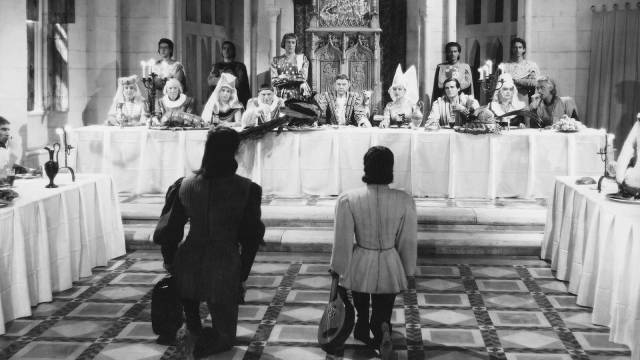
We still aren’t out of the pandemic woods in Winnipeg, but things have loosened up somewhat and Thanksgiving long weekend featured way more socializing than I’m used to these days. On the Friday and Sunday evenings I had friends in for dinner and a movie, and on Saturday I went to my friend Steve’s … for dinner and a movie. That evening at Steve’s included the most eating and drinking – a monster gin-and-tonic to start, big roast beef dinner with at least four glasses of wine, and after the other guests had left a couple of Netflix movies. After a false start (can’t even recall what that movie was, but it barely lasted five minutes) we ended up watching one of the worst Nic Cage movies I’ve ever seen, and he’s made more than his share of garbage over the years.
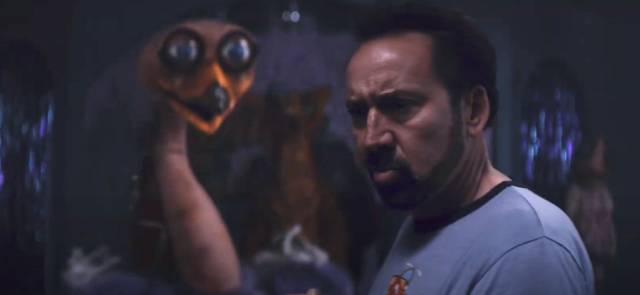
Willy’s Wonderland (2021), directed by someone named Kevin Lewis, is baffling in many ways, not least because Cage is listed as one of the producers, which indicates he must have actually liked the script. Which is odd because his bizarre, mannered, wordless performance suggests a deep well of contempt. He appears continuously unhappy and angry to be here in this mess about a guy who finds himself stranded in a small town where he’s persuaded to spend the night doing janitorial work in a closed-down theme restaurant where various animatronic characters come to life and try to kill him. It turns out the place was shut down because the owners were serial-killing Satanists who, when the law was closing in, committed ritual suicide, in the process of which their souls were transferred to the mechanical critters.
For some reason, the townsfolk – including the sheriff – deliberately find people like Nic to feed to the demonic killers as sacrifices. Naturally, Nic has skills they haven’t encountered before and between guzzling cans of some kind of soda and playing pinball, he cleans the place up and tears the critters apart. Meanwhile, the adopted daughter of the sheriff, lone survivor of a previous sacrifice which killed her family, has recruited her friends to burn the place down. Only she and Nic survive the night, but really who cares? It remains completely unclear why the sheriff and her friends keep feeding victims to the animatronics when it doesn’t seem very difficult to kill them, and we never learn anything about Cage’s character and why he does the things he does – why does he need to punctuate every fight with obsessively drinking soda and playing pinball? Is he here on purpose to clean the place up, or is it purely chance? The script by G.O. Parsons (his sole writing credit) is so lazy and half-baked that it’s easy to understand Cage’s obvious contempt for the project … but all the more baffling that he helped to produce it.
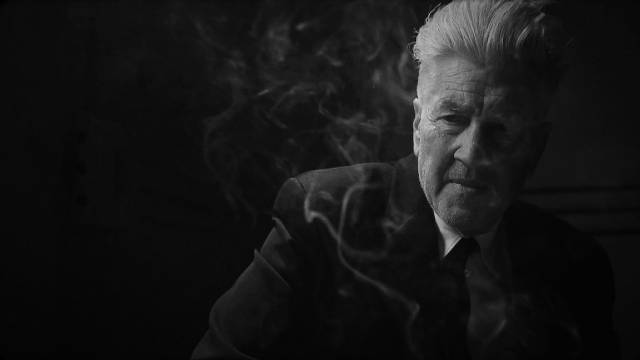
I guess we stuck with it simply to avoid one of those annoying evenings of endlessly searching Netflix for something to watch. But the evening was redeemed when Steve remembered that I’d previously asked him if David Lynch’s short film What Did Jack Do? (2017) was still available… I’d seen references to it a couple of years back, but not being a Netflix subscriber hadn’t had an opportunity to see it. But there it was, and it was worth the wait. What may sometimes get lost in the complexity of Lynch’s longer works is that there’s a huge element of play in his filmmaking, a delight in absurdity, the creation of a mood, a tone, which is so distinctively his own. What Did Jack Do? seems both a perfectly formed thing in itself and a suggestive fragment of something larger. It plays with the tropes of noir – moody black-and-white photography, a slightly seedy setting, wisps of cigarette smoke curling in the air – and pushes them into some other surreal realm through dialogue which sounds hardboiled while slipping towards the kind of absurd wordplay at which Lewis Carroll excelled; here, Lynch piles cliches and animal-centred sayings and metaphors into a dense pattern of nonsense from which somehow emotional meaning emerges.
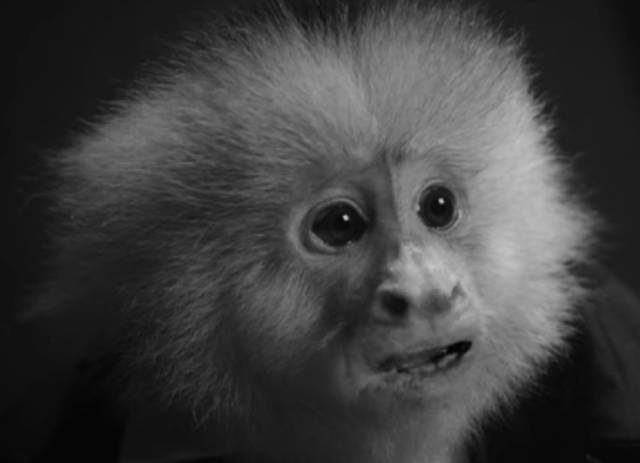
In a murky railroad station cafe, a man in a suit (Lynch himself) sits down across a table from a small, nervous figure. While they wait for their coffee, the man – apparently a detective – begins to interrogate Jack Cruz, who happens to be a Capuchin monkey with a disconcertingly human mouth (the compositing of this mouth to the monkey’s face is both an obviously simple visual effect and uncannily expressive). As the two joust verbally, a story begins to emerge; Jack is wanted for possibly having murdered someone named Max in a fit of jealousy over his lover Toototabon, who happens to be a chicken. The disconnect between the absurdity of the monkey-chicken romance and the genuine sense of emotional torment expressed by Jack produces a strange combination of comedy and tragedy, a kind of amplification of the mood of Eraserhead. Because the “performance” of the monkey is so expressive, the evasive tilts and turns of the head, the wide eyes which waver between defiance and despair, the words coming from the superimposed mouth become unsettlingly natural. This is a character with a history and complex emotions, caught by his interrogator at what must be the lowest point in his life.
I found myself wearing a broad, appreciative grin through the film’s dense seventeen minutes; in what is essentially a small, almost throwaway piece of creative play, Lynch manages to evoke multiple emotional registers, simultaneously complementary and contradictory, with seemingly effortless ease. What Did Jack Do? might be a minor work, but it has the air of a master tuning his instrument before launching into the complex symphony which would be Twin Peaks: The Return.
*
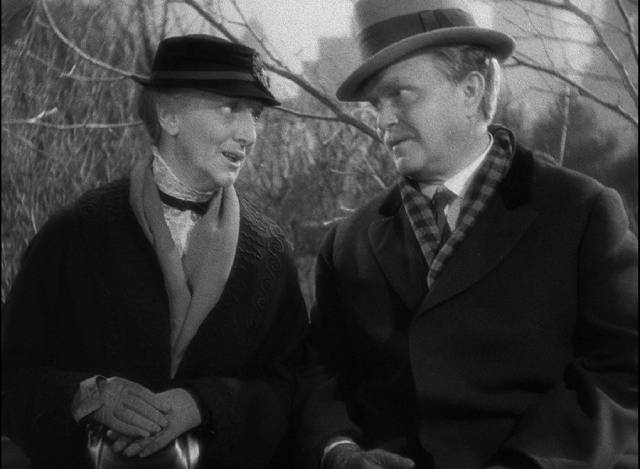
On Friday and Sunday, I did what I usually do when people come over – I put out a selection of disks and let my guests choose what to watch. By an odd coincidence, we ended up on both evenings watching Criterion Blu-rays which I had bought on sale during the final days of HMV before the company closed its doors for good in Canada. My only explanation as to why they’d been sitting on the shelf untouched for almost five years is that I buy way too many movies and just don’t have time to watch everything I own.
The coincidences extend to the fact that both films were made at times of national crisis and reflect what their particular societies were going through, though in very different ways. On Friday it was Marcel Carné’s Les visiteurs du soir (1942), and on Sunday it was Leo McCarey’s Make Way for Tomorrow (1937). I confess that my impressions of the former are a bit fragmentary because I was really tired at the time and my focus tended to drift; luckily I was a bit more alert on Sunday.
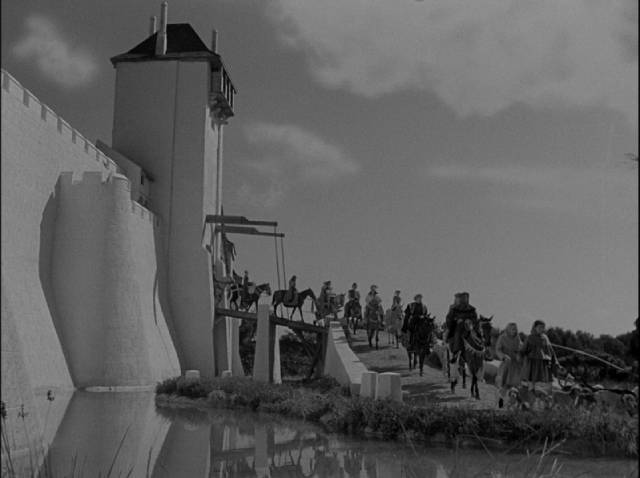
Les visiteurs du soir (Marcel Carné, 1942)
During the 1930s, frequently in collaboration with writer Jacques Prevert, Marcel Carné had perfected a deeply romantic style often termed poetic realism. His films dealt with love and crime in contemporary settings infused with an atmosphere which added an almost ethereal note to the lives of otherwise ordinary characters. When Germany invaded France, Carné was among the filmmakers who stayed. The situation was complex – those who left were seen as deserting their country; those who stayed and tried to continue making films during the Occupation risked being labelled collaborators because the Germans had taken control of the industry. (Bertrand Tavernier explored the politics and morality of the situation in Laissez-Passer [2002].)
Like his contemporary Henri-Georges Clouzot, Carné made only two features during the Occupation, but the two filmmakers took very different approaches. Clouzot’s movies were contemporary stories – The Murderer Lives at 21 (1942) is a kind of screwball mystery about a policeman going undercover to find a serial killer, while Le corbeau (1943) is more serious, dealing with a small town where someone stirs up trouble by sending poison-pen letters to ruin the life of a doctor. The latter caused Clouzot trouble because it was seen as an attack on citizens who served as informers during the Occupation, offering a very unflattering portrait of the French.
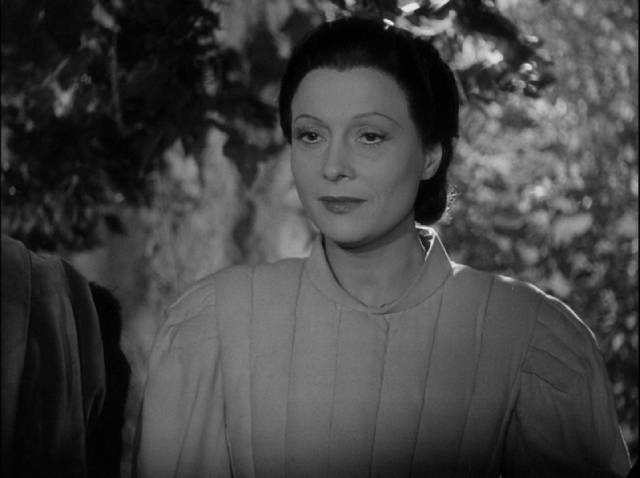
Both of Carné’s films, though, are seemingly far removed from contemporary reality, being instead elaborate historical fantasias. The second and better known is Les enfants du paradis (1945), a sprawling romantic epic set in the days before the 1830 revolution, which was filmed almost surreptitiously during the Occupation but completed and released soon after Liberation, offering the French a rich tapestry of national history. The first of these features went even further back in time and dipped into overt fantasy, set in the Middle Ages with a personal appearance by the Devil himself, though like Les enfants its subject too is romance and the impact of social and historical forces on the emotional relationships of the characters.
Les visiteurs du soir opens with two figures on horseback riding down a mountain road towards a castle. The film immediately declares its theatricality by asking us to accept that Arletty is convincingly disguised as a man. She is Dominique, ostensibly a travelling minstrel, accompanied by her partner Gilles (Alain Cuny), heading towards the castle of Baron Hugues (Fernand Ledoux) to provide entertainment at a banquet preceding the wedding of the Baron’s daughter Anne (Marie Déa) to Baron Renaud (Marcel Herrand). But Dominique and Gilles are not what they seem; they are actually emissaries of the Devil, sent to disrupt and sow discord.
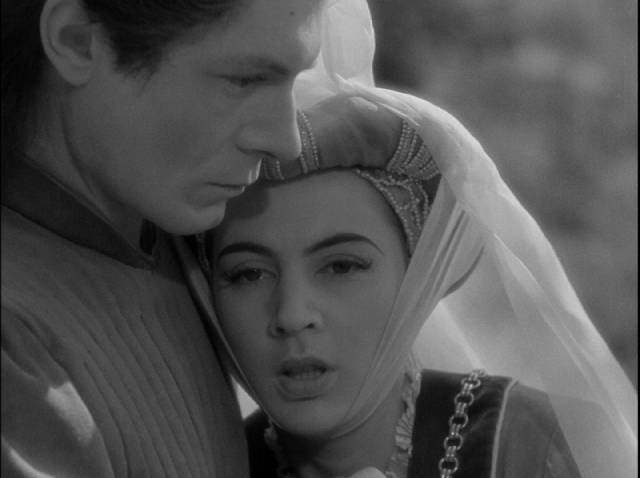
What we see on their arrival is that this society is cruel and violent, in little need of disruption. A distressed man is tossed out through the gate in front of them, his performing bear having just been killed by the guards for their own amusement. Gilles takes the chain from the man and regenerates the bear, bestowing a gift which confuses Dominique. When she asks why he bothered, he says that it amuses him to do an occasional good deed; this is incomprehensible to her.
Inside the banquet hall, the pair are invited to perform and Gilles sings a romantic song while staring deeply into Anne’s eyes, much to the irritation of Renaud, who pours contempt on the very idea of romance, preferring to express himself through violence. During a dance, the two minstrels reveal their plans: they stop time and separate Anne and Renaud, seducing each in turn to undermine the coming marriage. Dominique, now in female form, goes even further, seducing both Renaud and Hugues, setting them against one another. This results in the pair engaging in a duel to the death.
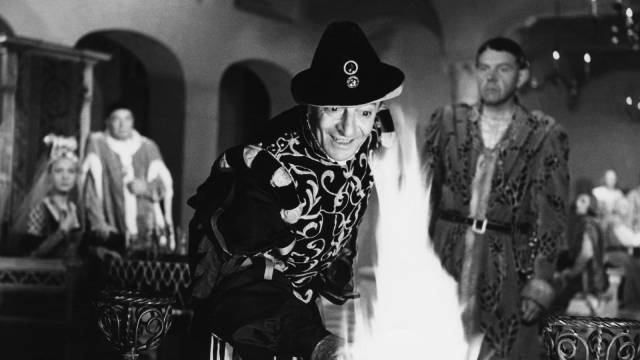
While Dominique amuses herself by crushing these violent men, Gilles finds himself falling in love with Anne, a turn of events which brings the Devil himself to the castle. Here the film’s tone shifts radically – its stately theatricality, evoking the tableaux of Medieval tapestries, becomes livelier and more anarchic thanks to the sly, energetic performance of Jules Berry who, in contrast to the almost dutiful approach to evil of Dominique and Gilles, obviously relishes his ability to corrupt pathetic humans. Drawn to the sweet innocence of Anne, he decides he wants her for himself and manoeuvres Gilles out of the way; Anne makes a deal with him to spare Gilles in exchange for giving herself … but after Gilles is free, she confesses that she lied and has no intention of going with the Devil. Incensed, the Devil turns the lovers to stone but discovers that their hearts are still beating, their love surviving despite what he has done to them.
A morality play about romantic love enduring the best efforts of society and the supernatural to defeat it, Les visiteurs du soir was seen as an allegory of France sustaining its identity under Occupation, with Berry’s Devil a veiled representation of Hitler. I’m not sure I would have seen that if it hadn’t been pointed out to me – it apparently didn’t occur to the Germans as the film became a huge success when released. It works very well on its own terms as an evocation of the Medieval world, somewhat reminiscent of Walerian Borowczyk’s Blanche (1971) with its tableau style. Visually, there are also some similarities to Ken Russell’s The Devils (also 1971); apparently, when initially constructed, the castle was given an aged look, its walls clad in ivy. Like Russell, Carné wanted the impression that this castle was new, as it would once have been, and it was given gleaming white walls which presage Derek Jarman’s stunning designs for Loudun.
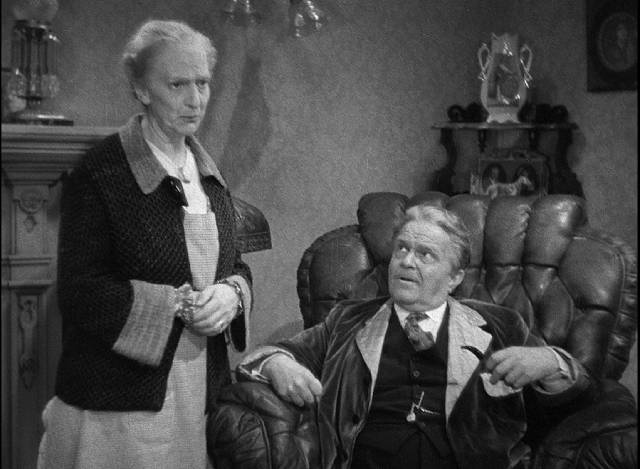
Make Way for Tomorrow (Leo McCarey, 1937)
To be honest, I’ve always had a hard time forming a clear idea of Leo McCarey. How do you fit together the greatest of the Marx Brothers movies (Duck Soup), the Catholic sentimentality of Going My Way and The Bells of St. Mary’s, and the demented anti-Communism of My Son John? All of those came after a prolific career directing silent comedy shorts (it was McCarey who teamed Laurel up with Hardy, creating one of the most indelible and long-lasting comedy teams in movie history); in addition, he made comedies in the ’30s with Mae West and Harold Lloyd, as well as one of the finest screwball comedies of the era – The Awful Truth (1937), with Cary Grant and Irene Dunne. It’s a dizzying array which made McCarey an admired figure among filmmakers and critics.
What I knew about Make Way for Tomorrow before finally seeing it was that it was one of the inspirations for Ozu Yasujiro’s Tokyo Story (1953) and that Orson Welles considered it the saddest movie ever made. Produced almost a decade into the Great Depression, it doesn’t directly reference the economic situation, but the conditions of the time underlie everything that happens in the film. McCarey and writer Viña Delmar keep things on a personal, individual scale, and yet the film is permeated with a critique of a heartless system being addressed as it was made by Roosevelt’s creation of Social Security. The film avoids being didactic and there is none of the speechifying that weighs down Frank Capra’s Depression comedies.
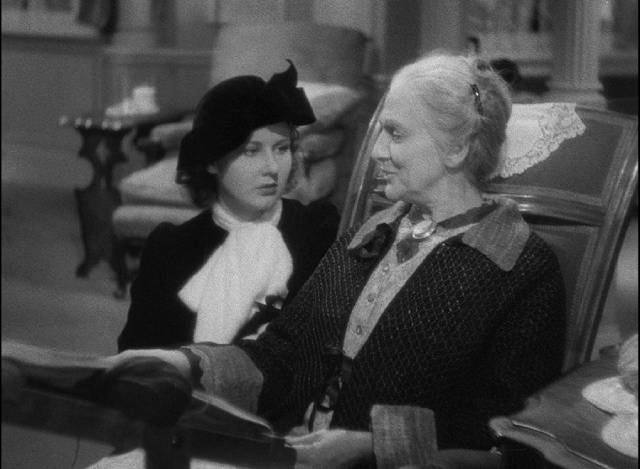
The film begins almost casually with four of Barkley (Victor Moore) and Lucy (Beulah Bondi) Cooper’s children visiting their home in the country; snow is on the ground and the house, smoke drifting from the chimney, is surrounded by a picket fence. The image is idyllic, evoking a cozy, Christmassy atmosphere. Inside, the four middle-aged children wonder why they’ve been invited and Barkley fumbles his revelation – having lost his job four years earlier, the money has run out and the bank is taking the family home. Elder son George (Thomas Mitchell) says a solution can be found … until Barkley says they have to be out by Tuesday. The children are obviously all uncomfortable, feeling the pressure of obligations they’d rather not acknowledge. They all have their own problems and limitations, though there’s a suggestion that they’re making excuses.
In the end, it’s decided that the old couple, married for fifty years, have to be split up – Lucy will go to live with George and his wife Anita (Fay Bainter), sharing a room with their teenage daughter Rhoda (Barbara Read), while Barkley will have to sleep on the couch at daughter Cora’s (Elisabeth Risdon). While this arrangement may be practical, and is purported to be temporary, it represents the breaking of a fifty-year bond, a denial of Lucy and Bark’s interwoven identities. Taken out of their own lifelong space, the old couple are now intruders into their children’s separate lives, a nuisance met with barely concealed resentment – as an unwanted obligation, their presence disrupts George and Cora’s own established family lives.
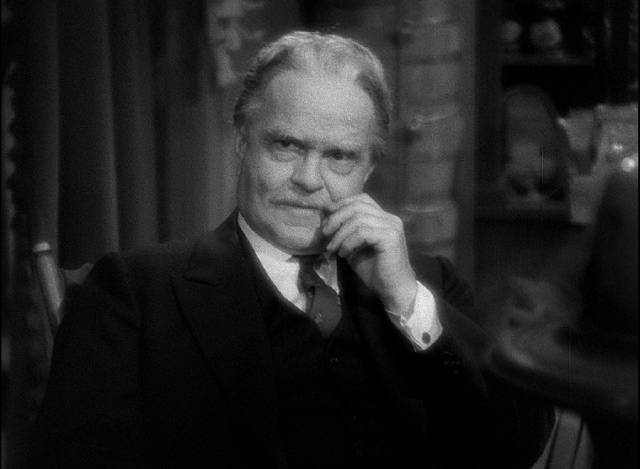
It’s a measure of McCarey’s skill – and the breadth of his empathy – that we are able to fully see both sides, to understand without passing judgment why this new situation, forced on everyone, breeds unhappiness without it being anyone’s particular fault. As Jean Renoir, himself an admirer of McCarey, said: everyone has their reasons. The tragedy of Make Way for Tomorrow is that financial circumstances (rooted in the Depression) have taken away the old couple’s independence, a loss compounded by their children’s inability to see them as autonomous individuals with lives of their own, separate from their roles as parents. Lucy and Bark are a nuisance, an intrusion, an irritation.
The children can’t perceive the depth of their parents’ unhappiness, but we can sympathize with them because their parents’ presence does interfere with their own established lives. They simply look for ways to “park” them, regardless of the pain this separation causes. When, for his health, it’s arranged for Bark to be sent to California to the third daughter, who can’t take both of them, Lucy and Bark realize that their life together is truly over. Lucy spares George the pain of telling her by voluntarily saying she will go to live at a home for “elderly ladies”. Before the end, Bark comes to New York and the pair have just five hours for their farewell.
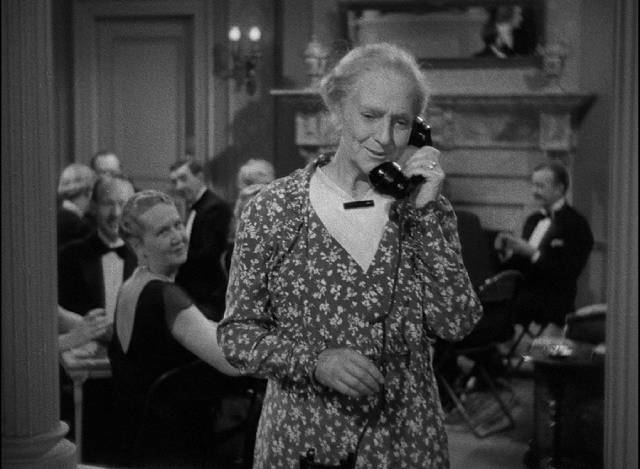
But that brief time together, fraught with the knowledge of their final separation, becomes strangely liberating. Alone together in the city, they recall the only other time in their lives when they had this kind of (brief) independence: when they came to the city for their honeymoon fifty years earlier. With memories triggered, they begin to retrace that long ago trip, becoming lighter and happier. And strangers begin to respond to them, not as just an old couple, not as somebody’s parents, but as distinctive and charming individuals. There’s a car salesman who gives them a ride, and the staff of the hotel where they once stayed. The hatcheck girl whom they tell of their earlier visit, the manager who picks up their tab, even the band leader in the ballroom who sees them stranded on the dance floor when he begins a boisterous modern tune and quickly switches to the slower “Let Me Call You Sweetheart”.
In these few brief moments, having decided to abandon a final dinner with their children, Lucy and Bark become sweethearts again, still young, still very much in love. The remarkable thing is that McCarey is able to convey this without bathos; there’s no maudlin sentimentality, but rather genuine sentiment and deeply felt emotion. The couple have managed to throw off decades of the constraints and obligations of parenthood, finding themselves again at the very moment that their shared life is coming to an end. Their goodbye at the train station is absolutely heartbreaking, again played quietly and without sentimentality, but the emotional pain and the awareness of the loneliness they both face is written on their faces even as they try to make the parting easier for each other.
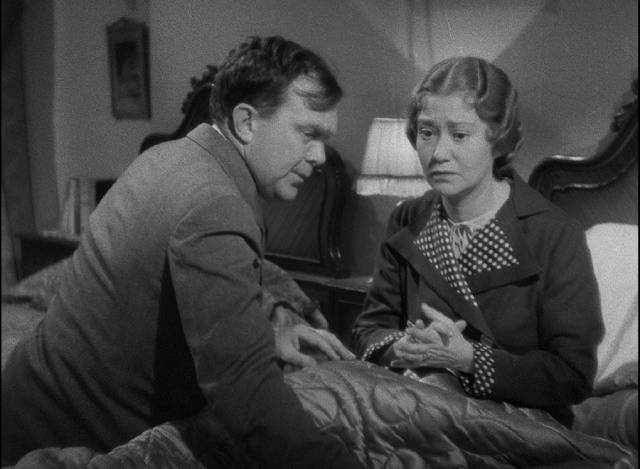
Paramount studio head Adolph Zukor pressed McCarey throughout production to provide a happier ending, but he resisted, sticking to a devastating reality instead. As an artist, he was absolutely right; as a commercial filmmaker, though… Despite fine reviews, the film was a box office failure; those reviews couldn’t help telling the potential audience that it was a real downer – as Welles said, the saddest movie ever made. The strange thing is that, while it’s so emotionally wrenching, it’s also filled with humour, often outright funny, with wonderful performances which switch registers from moment to moment with an absolute authenticity. These characters are living, breathing people responding moment to moment as real people might in these fraught situations. For a studio production made by a noted comedy director, Make Way for Tomorrow is a remarkable achievement, still potent after eighty-four years.
Comments